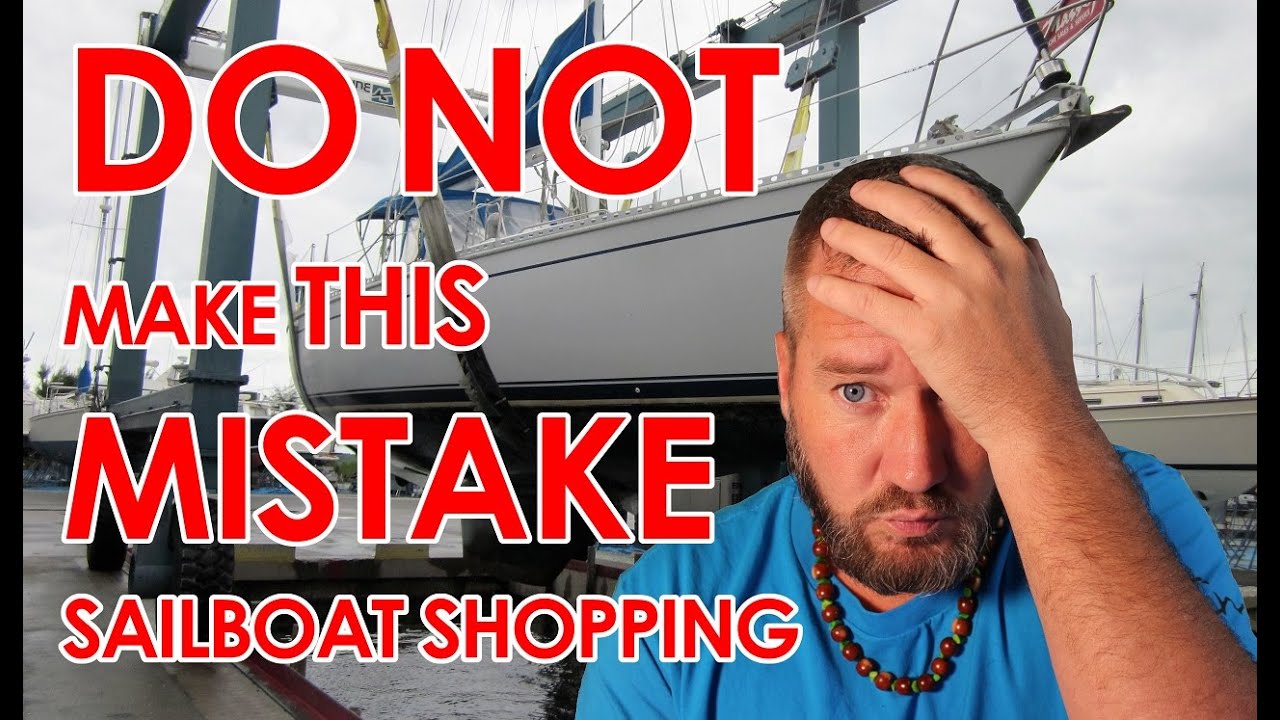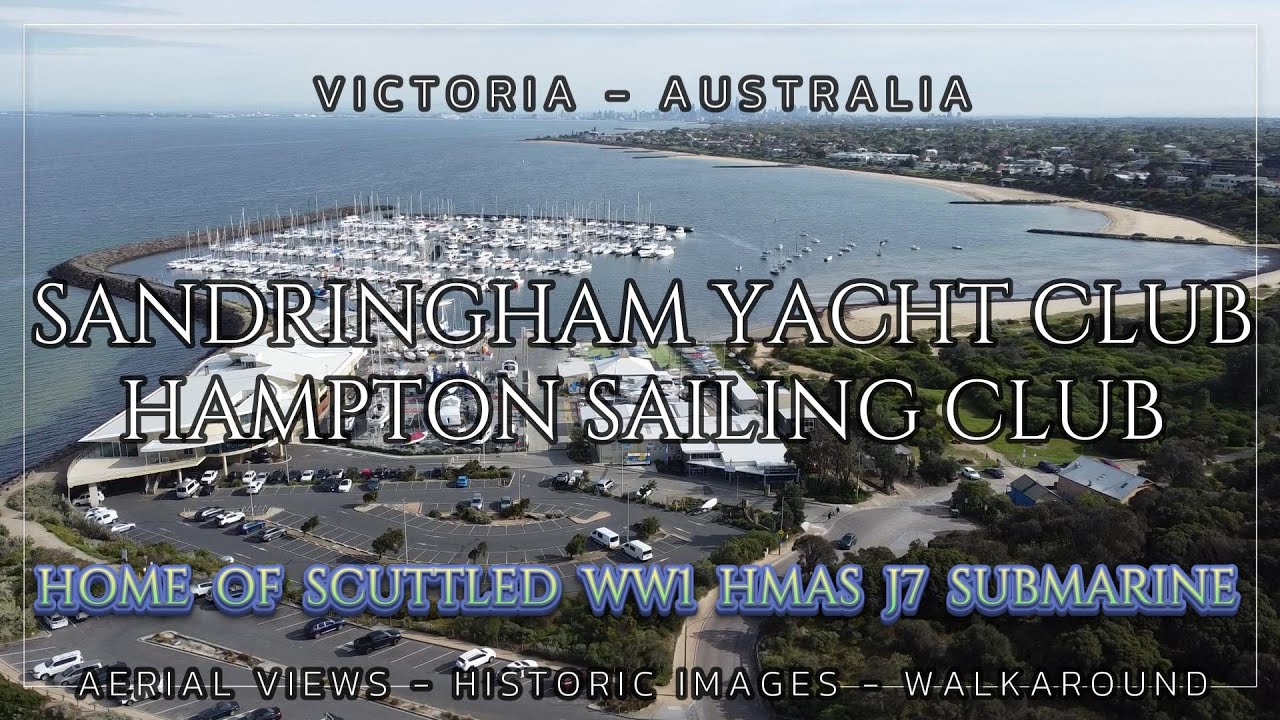Săptămâna aceasta, Tim vorbește despre cele mai importante greșeli pe care oamenii le fac atunci când cumpără barca cu pânze. De la Ketch Rigs, la Full Encapsulated Keels, la Fin Keels. Lady K Discord: https://discord.gg/KjFU3ntwpt Ai nevoie de un consult? Faceți clic aici pentru a trimite un mesaj: https://ladyksailing.com/consults/ Vrei să ajuți să sprijiniți Lady K Sailing? Faceți clic aici pentru a deveni Patron: http://www.patreon.com/ladyksailing Sau aici pentru a face o donație unică: http://www.ladyksailing.com/team-k Urmărește-l pe Lady K pe Facebook: https:// www.facebook.com/ladyksailing sau Instagram: https://www.instagram.com/ladyksailing/
source
NU faceți aceste greșeli cumpărând barca – Ep 211 – Lady K Sailing

35 thoughts on “NU faceți aceste greșeli cumpărând barca – Ep 211 – Lady K Sailing”
Comments are closed.




Happy new year and thanks by your documented opinions. Keels are the most important thing in a boat in my opinion
"Happiness is a lot closer than you thought it was" true of everything in life. There is no greener grass, just more grass.
I have been watching the LadyK videos for some time now. Your info approach in this non bias way gets me thinking on every video. Here I am looking to purchase a full keel to sail the world and you bring sensibility into view. Really enjoy your videos. And hopefully I will become a patron of yours.. keep it up and hope to meet you out on the water and shake your hand…stay afloat..
Great stuff- loved this video.
I bought a blue water boat, then spent 3 years preparing for the voyage of a lifetime. Departed Ensenada Mexico June 14th, 35 days later arrived in the Nuku-Hiva Marquesas Islands French Polynesia! Solo in a 27' boat at 69 years young. Best thing I ever did and I would never own a boat that could not take me anywhere on the planet! Fiji? Hawaii? New Zealand? Bring it on!! Bleach bottles should be recycled not sailed. Ben S/V DAWN
As someone who keeps a boat on a drying mooring (bilge keels obviously), I really don't want encapsulated keels. The cast iron ones can get scratched up and will never break through.
Any keel done right is good. Any keel done poorly is, well, poor. When people think of cruising they think of the destination and open water. The truth is you'll be in unfamiliar marinas, anchorages, wall tie ups and many other fun to get in and out of places. Maneuverability can't be ignored. Then, once there, it's all about livability for all on board. We once met a couple whose boat wouldn't tack, much less steer around to a narrow slip at the marina. You won't be anchoring all the time, I guarantee it. Enjoyed the video!
Personally I have a problem. I love every sailplan and boat design I've come across so far. So for me it's what experience I want or what I'm doing. I just have to buy, build, and borrow to get my fix for that variety fix.
I agree with just about everything you say here and would like to add a few thoughts. Regarding sloop vs. ketch (or even cutter): The individual sail on a ketch of comparable size can be smaller than the sail on a sloop, meaning easier to handle especially when up- or downrigging. I have an older sailplan on my sloop, 135% genoa and I can tell you: as I get older this thing becomes heavier and more stubborn every year.
I also would like to expand on your last point. A smaller boat is better and I am referring to number of berths here. As you retire you may think of the kids and grandkids visiting you in these exotic places you plan to visit. Let me tell you: They never come. The extra cabins / berths become storage for stuff you only bought because you have the storage. The extra size of the boat drains your wallet. And if the kids did all come at the same time with their significant others there will be a hotel room for those who can not sleep on board. So I suggest to buy a boat accommodating your regular complement of sailors comfortably and one additional cabin with a double berth for the occasional friend/s visiting or for yourself if/when you are being sent to the doghouse.
Great video Tim with very important topics. Good I watched it. Thanks!
Tim. I might add that most production boats (Beneteau, Jeanneau, DuFour, Bavaria) use bolt-on IRON keels these days, not lead. Besides constantly having to deal with rust, none are particularly strong when hitting a reef, as the narrow attachment point at the hull does not "spread the collision load" across a wide area but concentrates the leverage at the small bolt-on grid which will "pop" the internal grid loose and can even tear out the fiberglass in the hull. I think a full keel (poured in place solid lead) is still best for cruising, and not as slow as people think when the boats are loaded down with cruising accouterments. For instance, a full keel Westsail 32 WON the Transpac a few years back!
I cant comment. I own a 26s MacGregor weekender. A lightly built trailer boat with a swing keel that can uphaul into a molded in trunk in the hull in the middle of the boats water ballast tank. I live in Key west and keel boats hate me. I can sail with the keel up in 2 feet of water. The boats anchored next to my houseboat now with keel up, mast down, and for rent or sale.
I am very happy with a bolt-on lead keel design that is midway between full length versus fin keel. This is the shoal keel on the Pearson 36-2. Below the hull, the keel is 8' long and 2-1/2' deep, and is able to maintain a good hydrofoil shape (10" at its widest). The top of the keel wraps around a strong stub, with keel bolts extending over a 6' span. Those dimensions mean that running aground will spread impact loads widely, and the worst damage will be gouging or denting of the lead. To simplify the design and eliminate potential problems, I also eliminate the centerboard. [CB trunk closed off below with epoxy and filled with concrete – heavier than the CB, adds ballast.]
We are just beginning our search for our first boat. I have a littel experience but know my limitations. Im currently leaning towards a motorsailer, slower but with more room. I've seen a couple but its early days and Im still trying to learn what I should be looking at and why so thanks for the useful tips.
Great Video, I have been watching for a few years now during my boat research. I love this content and approach on boat buying. As a future blue water sailor and this video has helped me to reaffirm my decision on the manufacturer and model of my choice of boat. Thank you and keep up the great content.
Why on earth would you seal up things inside on a boat that has encapsulated keel…it's by design encapsulated outside not inside. Pouring concrete or iron in there is just plain stupid. The best thing as a weight to use is bags of led, small enough that you can move them around if and when need be. And what is faster…faster in light winds…modern boats are designed to have full canvas up at about 7-8 knots of wind…after that the word "faster" doesn't really apply anymore let alone comfort. How many of the bolt on keels have not been grounded?
Here's a good series of videos what it actually takes to properly repair bolt on keel/hull after grounding
https://youtu.be/1dKFs3rVazw
Good video mate have a ripper new year!
Tim you didn't mention that any boat with the prop in an aperture won't back up. I spent many hours trying to learn how to back my Nicholson and the only time it would answer the rudder was when it was out of gear and coasting. I saw many boats whose prop was free of the keel back them up long distances under full control. Just another aspect of sailing…
I MISS the old music !
In my opinion, the bolt-on keel is fine if it is not extreme. An extreme bolt-on is thicker at the bottom than at the top, and usually has a bulb as well. This puts it at an extreme structural disadvantage. And these are often attached to a flat spot on the bottom. The trouble with a flat spot is that it is very difficult to make it stiff enough to take the concentrated load it is given, especially with a material like GRP, which is known to fatigue with bending cycles. I would not trust a boat with that kind of keel. If it ever had a keel strike, I would be looking at very expensive repairs.
As for rigs, a masthead sloop is about all there is available that I think is up to ocean conditions. But it had better have a roller-reefing jib system that is bullet proof. Other than that, there is always slab-reefing the jib, a somewhat dangerous job in rough conditions.
With no roller-reefing (for the jib), I would prefer a cutter (two jibs and the mast further aft), or a ketch. Ketch and yawl rigged boats have been know to self-steer reliably without an auto-pilot or a vane.
Always good content and once again you haven't disappointed. One thing that I would add is that no discussion of keel types is complete without mentioning rudders.
I have a friend who was crewing on a Farr 52 when what they believed to be a sunfish or possibly a whale struck their rudder. This caused the rudder stock bearings to fail which led to the rudder stock thrashing around and extensively damaging the hull. It took only minutes before a mayday was declared and the crew stepped up onto the life raft.
Fortunately, this happened in a race and one of their fellow competitors was standing by, ready to assist. There were no injuries nor loss of life.
I remember seeing the captain and half owner of the vessel, the late Graeme Ainley, interviewed on television. His words were somewhere along the lines of "It's very sobering
watching your yacht sink below the surface, knowing it will be lost forever".
Great job on explaining keel types
My boat has a weird modified keel. The front ballast is bolt on but there's an aft part that's encapsulated. Also she's a ketch 😉
Good analysis! No boat is perfect and it is good to show an open mind when shopping.
Excellent explanations. I always wondered why people chose a ketch or yawl over a sloop. This made me wonder about the difference between a Ketch and a Schooner. I used to sail on a wonderful 72’ wooden schooner. Always loved the look of a schooner. What are the advantages/disadvantages?
You make some good points, but here's my question.
Since most boats being purchased are 30-40 years old, what suggestion can you make regarding keel inspection and maintenace, for a bolted keel?
You brought up Rafiki, and sure, it was due to bad workmanship and structural fatigue.
But on the other side, Rafiki was a racing sailboat professionally maintained and professionally crewed.
Professional sailors and a professional maintenance crew failed to identify problems and maintain the keel in a safe manner.
What is your confidence level, in the ability of the average sailor to do so, and to properly inspect, identify potential issues and repair a bolted keel?
Great Video– Thank you!!!
"Happiness is a lot closer than you thought it was" – I needed that
I love love your channel! I am finally getting serious about buying my boat, and I think I have decided on a full keel boat, simply for the safety aspect. The whole bolted keels falling off has scared the crop out of me! But I am in lo e with the Catalina. Perplexed!!
Good video a lot of info . I am very experienced on sloop and
Ketch rigs . A ketch is not designed to run around day sailing . They are meant to ocean sail . and if they are long keel very comfortably, I might add. As you know the majority of ocean sailing is on run and the beam not usually close hauled.
Running With a ketch rig gives you a lot of Combinations Of sail configurations.
I single hand a ketch rig all the time even club race . And the truth is it's It's not much more effort than tacking a sloop. The mizzen does not give you much hard on the wind and does not require much effort to adjust. I also sail a catalina with a bolt on keel and when you hit sand and mud its a hard bang . A full
Or long incapacitated keel usually rides up a grounding smoothly because
Of the gradual slop of the keel that is unless you hit a wall or reef.
You commented that a hard grounding on a bolt on is easier to repair. The keel
What about the boat . Probably not going to sink a boat smashing a incapacitated keel. A bolt on Probably will take in water on a bad grounding .
As far a long keel boats being slow my 41 foot has hull speed about 8 knots.
And I never win a race but I can sure finish them . A long keel ketch below 15 knots is crawling compared to a equally sized sloop. But when it hits 20 and above they are as fast as an equally sized sloop.
And u ended this episode with mayne what I want to hear. Id love to be prepared for ocean crossings, if it strikes me, but I could as easily end up in the Caribbean and just stay. I just want a safe boat!! I need to not be afraid of making the wrong choice. Thanks for all the great advice!
When I was a lot younger, I lusted after a Bermuda 40 Yawl. Now in my 60's I'm thinking a ~50 ft Ketch, with centerboard, although the Garden 46 looks interesting.
Best wishes from the far North.
Thats was jusr great..thanks..food for thought..just bought a Northstar 35..1976..i think shes built like a brick s.h….
With a fin keel..the bolts an rodes that hold the fin keel are all stainless steel..she'll be the first sailboat for me..before this i was a cabin cruiser guy..thanks again for the insight
What about that spiky thing below the water at the back of the boat?
What an excellent presentation.